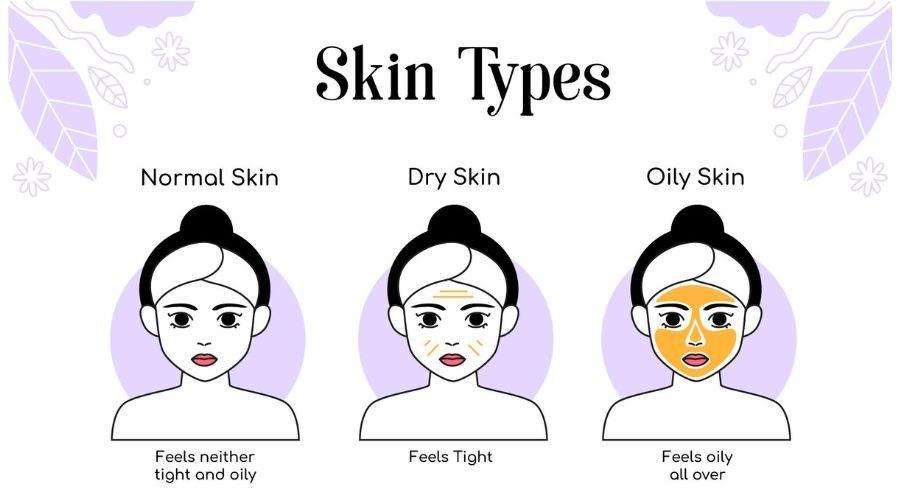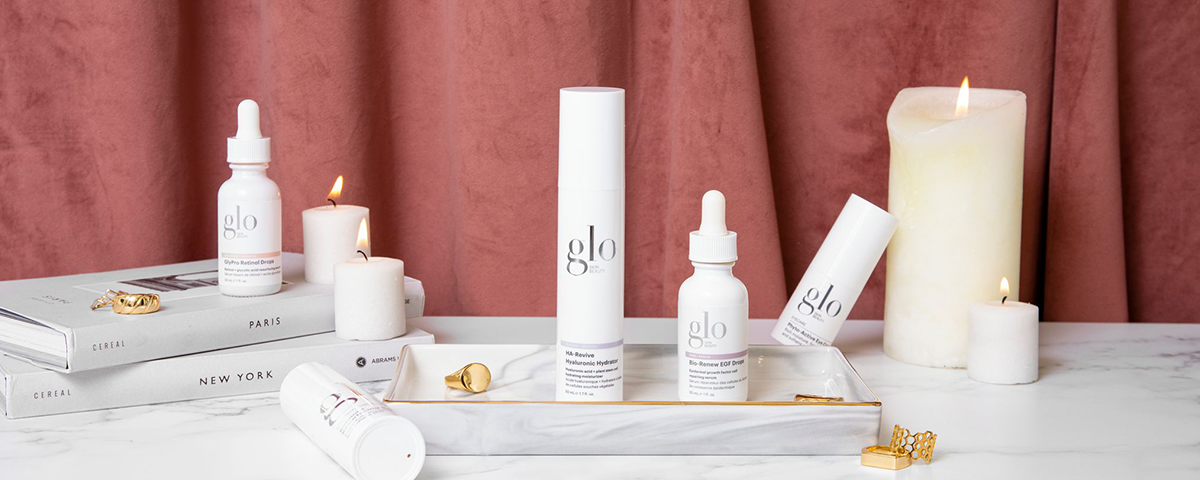Nighttime Skincare Routine for Clear Skin: Achieving Radiance While You Sleep
A nighttime skincare routine is not just a luxurious ritual; it’s a crucial part of maintaining healthy and clear skin. During the night, our skin undergoes repair and regeneration, making it the optimal time to apply targeted treatments that can enhance these processes. Whether you’re dealing with acne, dullness, or uneven texture, a well-crafted nighttime skincare regimen can make a significant difference in achieving the clear, radiant complexion you desire.
Understanding Your Skin’s Needs
Before diving into specific products and steps, it’s essential to understand your skin type and concerns. This knowledge will guide you in selecting the right ingredients and treatments that will effectively address your unique skincare needs. Common skin types include:
- Oily Skin: Prone to excess sebum production, leading to shine and acne.
- Dry Skin: Lacks moisture, often feels tight and may show signs of flakiness.
- Combination Skin: Exhibits both oily and dry areas, typically with an oily T-zone.
- Sensitive Skin: Easily irritated by skincare products, weather changes, or certain ingredients.
- Normal Skin: Balanced, neither too oily nor too dry, with minimal sensitivity.
Identifying your skin type will help you tailor your nighttime routine for optimal results.
Essential Steps for a Nighttime Skincare Routine
A basic nighttime skincare routine typically consists of cleansing, toning, treatment, moisturizing, and occasional exfoliation. Here’s a detailed breakdown of each step and the products that can aid in achieving clear skin:
1. Cleansing
Purpose: Removes makeup, dirt, and impurities accumulated throughout the day, preparing the skin for subsequent treatments.
Product: Choose a gentle cleanser suited to your skin type. For oily or acne-prone skin, look for salicylic acid or benzoyl peroxide cleansers. Dry or sensitive skin benefits from hydrating or creamy cleansers.
Technique: Massage the cleanser onto damp skin using circular motions, then rinse thoroughly with lukewarm water. Pat dry with a soft towel.
2. Toning
Purpose: Balances the skin’s pH levels, tightens pores, and removes any residual impurities after cleansing.
Product: Opt for an alcohol-free toner enriched with ingredients like witch hazel, rose water, or niacinamide, depending on your skin’s needs.
Application: Apply the toner to a cotton pad and gently sweep it across your face and neck. Allow it to absorb fully before proceeding to the next step.
3. Treatment (Serums or Spot Treatments)
Purpose: TTargetspecific skincare concerns such as acne, hyperpigmentation, or signs of ageing
Products:
- Acne-Prone Skin: Use serums with ingredients like retinol, salicylic acid, or tea tree oil to unclog pores and reduce acne.
- Hyperpigmentation: Look for serums containing vitamin C, kojic acid, or niacinamide to brighten skin and fade dark spots.
- Anti-Aging: Incorporate retinoids or peptides to promote collagen production and reduce fine lines.

Application: Apply a pea-sized amount of serum evenly over your face and neck, avoiding the eye area. Allow it to absorb completely before applying moisturizer.
4. Moisturizing
Purpose: Hydrates the skin, locks in moisture, and helps strengthen the skin’s natural barrier.
Product: Choose a moisturizer suitable for your skin type—gel-based for oily skin, thicker creams for dry skin, or non-comedogenic formulas for acne-prone skin.
Technique: Gently massage the moisturizer into your skin using upward motions until fully absorbed. Don’t forget the neck and décolletage.
5. Eye Cream
Purpose: Nourishes the delicate skin around the eyes, targeting concerns like dark circles, puffiness, and fine lines.
Product: Select an eye cream with ingredients like hyaluronic acid, peptides, or vitamin K to address your specific eye area concerns.
Application: Use your ring finger to dab a small amount of eye cream around the orbital bone, avoiding direct contact with the eyes.
6. Occasional Exfoliation
Purpose: Removes dead skin cells, unclogs pores, and promotes cell turnover for smoother, brighter skin.
Product: Use a gentle exfoliant 1-2 times a week, such as chemical exfoliants (e.g., AHAs or BHAs) or gentle physical exfoliants (e.g., sugar scrubs).
Technique: Apply the exfoliant to damp skin, massage in circular motions for 30-60 seconds, then rinse thoroughly with lukewarm water.
Additional Tips for Clear Skin
- Hydration: Drink plenty of water throughout the day to keep your skin hydrated from within.
- Sleep: Aim for 7-9 hours of quality sleep each night to allow your skin ample time to repair and rejuvenate.
- Sun Protection: Apply sunscreen daily, even at night, as some moonlight
A consistent nighttime skincare routine tailored to your skin type and concerns is key to achieving clear, radiant skin. By cleansing, treating, and moisturizing effectively, you support your skin’s natural renewal processes and address specific skincare issues. Remember, patience and consistency are crucial as skincare results often take time. Consult with a dermatologist if you have persistent skin concerns or are unsure about which products to use. With dedication and the right products, you can wake up to healthier, clearer skin every morning.
Implementing a nighttime skincare routine is a commitment to your skin’s health and appearance. By following these steps and tips, you can pave the way for clearer, more radiant skin over time.
Certainly! Let’s delve deeper into some advanced skincare treatments and specific ingredients that can further enhance your nighttime routine for clear skin:
Advanced Treatments for Clear Skin
1. Retinoids
Purpose: Retinoids, such as retinol or prescription-strength tretinoin, are derivatives of vitamin A known for their anti-ageing and acne-fighting properties. They promote cell turnover, stimulate collagen production, and help unclog pores.
Usage: Start with a pea-sized amount, applying it to clean, dry skin every other night to prevent irritation. Gradually increase frequency as your skin tolerates it.
2. Chemical Peels
Purpose: Chemical peels exfoliate the skin more deeply than regular exfoliants, addressing concerns like acne scars, hyperpigmentation, and fine lines.
Types: Options range from mild AHAs (alpha hydroxy acids) like glycolic acid to stronger BHAs (beta hydroxy acids) such as salicylic acid. Consult a dermatologist or skincare professional for personalized recommendations and treatments.
3. Face Masks
Purpose: Face masks can provide intensive hydration, deep cleansing, or targeted treatments depending on their ingredients.
Types: Look for masks containing clay or charcoal to draw out impurities from pores (ideal for oily skin), hydrating masks with ingredients like hyaluronic acid or aloe vera (great for dry or sensitive skin), or brightening masks with vitamin C or niacinamide.
Usage: Use 1-2 times a week after cleansing and before applying serums or moisturizers. Leave on for 10-15 minutes, then rinse off with lukewarm water.
4. Hydrating Serums
Purpose: Serums containing hyaluronic acid or glycerin deeply hydrate the skin, plumping up fine lines and improving overall skin texture.
Usage: Apply a few drops to damp skin after cleansing and toning, allowing it to absorb fully before proceeding with moisturizer. This helps lock in moisture and enhance the effectiveness of subsequent skincare products.
Specific Ingredients for Clear Skin
1. Salicylic Acid
Benefits: A beta hydroxy acid (BHA) that penetrates deep into pores, dissolving oil and dead skin cells. Effective for treating acne-prone skin and preventing breakouts.
Products: Found in cleansers, toners, and spot treatments. Ideal for those with oily or combination skin.
2. Vitamin C
Benefits: A powerful antioxidant that brightens skin tone, fades dark spots and acne scars, and boosts collagen production.
Products: Available in serums and moisturizers. Use in the evening to repair and protect against environmental damage.
3. Niacinamide (Vitamin B3)
Benefits: Reduces inflammation, regulates sebum production, and improves skin barrier function. Suitable for all skin types, including sensitive skin.
Products: Found in serums, moisturizers, and toners. Helps improve overall skin texture and clarity.
4. Hyaluronic Acid
Benefits: A humectant that attracts moisture to the skin, keeping it hydrated and plump. Helps reduce the appearance of fine lines and wrinkles.
Products: Typically found in serums and moisturizers. Apply to damp skin for best results.
Tailoring Your Routine to Specific Skin Concerns
1. Acne-Prone Skin
Focus: Use gentle, non-comedogenic products that won’t clog pores. Incorporate salicylic acid to prevent breakouts and retinoids to promote cell turnover.
Routine: Cleanse, tone with an alcohol-free toner, apply acne treatment or serum, moisturize with an oil-free moisturizer, and spot-treat as needed.
Glowing Bride: Get the Perfect Bridal Makeup Look for Your Special Day
2. Dry or Dehydrated Skin
Focus: Hydration is key. Use rich moisturizers and hydrating serums containing ingredients like hyaluronic acid or ceramides to restore moisture levels.
Routine: Cleanse with a hydrating cleanser, tone with a soothing toner, apply hydrating serum, follow with a nourishing moisturizer, and use a facial oil for added hydration if necessary.
3. Uneven Skin Tone/Hyperpigmentation
Focus: Incorporate brightening ingredients like vitamin C, niacinamide, and exfoliating acids (AHAs/BHAs) to even out skin tone and fade dark spots.
Routine: Cleanse, tone with a brightening toner, apply vitamin C serum, follow with a treatment serum containing niacinamide or exfoliating acids, moisturize, and use SPF during the day to protect against further pigmentation.
Lifestyle Factors for Clear Skin
Apart from your skincare routine, consider these lifestyle factors that can impact your skin’s clarity and health:
Diet: Eat a balanced diet rich in antioxidants, vitamins, and minerals to support skin health.Exercise: Regular physical activity improves circulation and promotes healthy skin.Stress Management: High-stress levels can exacerbate skin conditions. Practice relaxation techniques such as yoga or meditation.Sleep: Ensure adequate sleep to allow your skin time to repair and regenerate
A nighttime skincare routine designed for clear skin is not only about applying products but also understanding your skin’s needs and choosing the right ingredients and treatments. Consistency, patience, and a holistic approach that includes lifestyle factors are key to achieving and maintaining a radiant complexion. Remember to consult with a dermatologist or skincare professional if you have specific concerns or conditions that require personalized advice. With dedication and the right skincare regimen, you can wake up each morning to healthier, clearer, and more beautiful skin.
Advanced Techniques and Tips for Optimal Nighttime Skincare
Building on the foundational elements of a nighttime skincare routine, some additional techniques and tips can further enhance your journey towards clearer and healthier skin.
1. Double Cleansing
Purpose: Especially beneficial if you wear makeup or sunscreen during the day, double cleansing ensures thorough removal of all residues without stripping the skin.
Technique: Start with an oil-based cleanser to dissolve makeup and sunscreen. Follow up with a water-based cleanser to remove any remaining impurities. This method prevents clogged pores and allows subsequent skincare products to penetrate effectively.
2. Layering Products Correctly
Purpose: Correct layering ensures each product can work optimally without interference from other formulations.
Technique: Apply products from thinnest to thickest consistency. Start with watery serums or treatments, followed by thicker creams or oils. This sequence ensures each product can penetrate the skin without being blocked by heavier formulations.
3. Sheet Masks
Purpose: Sheet masks are a concentrated way to deliver active ingredients to the skin, providing instant hydration and nourishment.
Usage: Incorporate sheet masks into your routine 1-2 times per week after cleansing and before applying serums. Leave on for 15-20 minutes, allowing the skin to absorb the essence. Follow with your regular nighttime skincare routine.
4. Facial Massaging
Purpose: Facial massaging promotes circulation, reduces puffiness, and enhances product absorption.
Technique: Use gentle, upward strokes and circular motions to massage your face and neck while applying serums or moisturizers. This technique not only relaxes facial muscles but also ensures even distribution of products for better efficacy.
5. Overnight Masks or Sleeping Packs
Purpose: Overnight masks or sleeping packs provide intensive hydration and repair while you sleep.
Usage: Apply a thick layer of the overnight mask as the final step in your nighttime routine. Leave it on overnight to allow the active ingredients to work deeply into the skin. Wake up to softer, more nourished skin in the morning.
6. Spot Treatments
Purpose: Targeted treatments for specific skincare concerns like acne, inflammation, or dark spots.
Products: Use spot treatments containing ingredients like benzoyl peroxide, salicylic acid, sulfur, or tea tree oil. Apply directly to problem areas after cleansing and toning, before applying moisturizer.
7. Avoiding Over-Exfoliation
Purpose: While exfoliation is essential for removing dead skin cells, over-exfoliation can lead to irritation and compromise the skin’s barrier.
Frequency: Limit physical exfoliation to 1-2 times per week and chemical exfoliation (AHAs/BHAs) to every other day or as tolerated










Pingback: Natural Remedies for Acne Scars and Dark Spots – THE FAST JOBS
Pingback: Career Options After Graduation - Government Jobs for Graduates - THE FAST JOBS